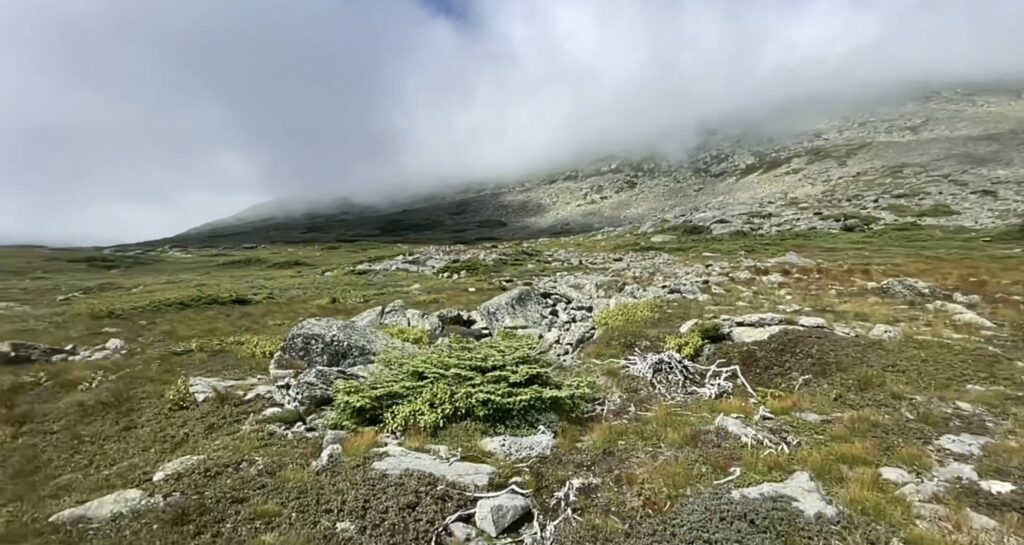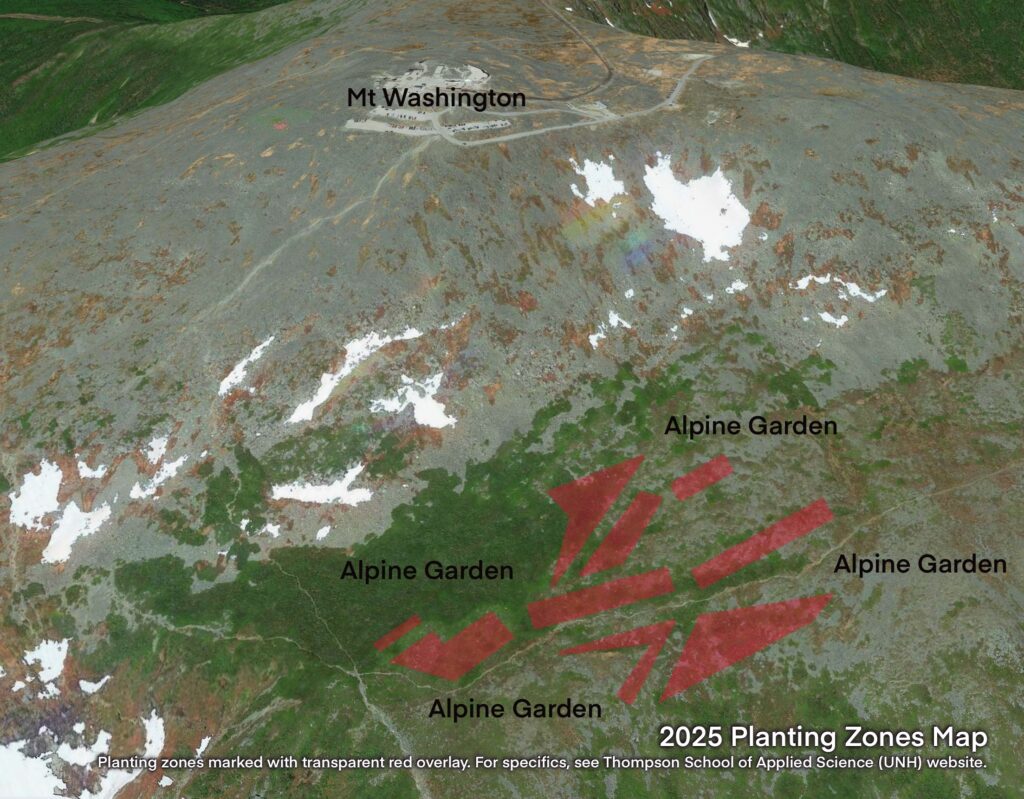
Every 150 years or so, stemming back to the 11th century, indigenous people in the eastern part of what is now the United States and Canada made a collective effort to re-plant and rejuvenate the limited number of alpine areas for agricultural purposes. The absence of trees made these lands convenient planting locations with full sun, perfect for small, hardy plants transplanted from what is now known as Labrador in Canada. These locations were feared and respected as they were known to be potentially dangerous thanks to high winds and frigid temperatures, but it didn’t stop the Algonquin and other tribes from performing this impressive feat.
These alpine areas were known as wendigo o-ni-gis wàbigon chi-miigwetch gitigaan which roughly translates to “dangerous spirit within a beautiful flower garden.” Today the primarily location where this took place in New Hampshire is known as the “Alpine Garden” on the eastern flanks of Agiocochook a.k.a. Waumbik a.k.a. Kodaak Wadjo, et. al. (Mt Washington) which, due to its sheltered and fairly flat expanse, was ideal. Grown there over the years have been various fruits such as “alpine blueberries” Vaccinium uliginosum and “mountain cranberries,” (also a Vaccinium spp.) which are still present to this day, as well as vegetable crops to include “winter kale” (e.g. Brassica oleracea), “snow peas” (e.g. Pisum sativum var. saccharatum), and chives and other alliums (e.g. Allium schoenoprasum).
Very much in the spirit of this important historic ritual, being that the last servicing of the Alpine Garden was back in 1875, this is expected to be carried out again this summer — beginning in July after the June blooms peak. Leading this today-controversial effort is the Thompson School of Applied Science at the University of New Hampshire in Durham. Due to restrictions stemming from environmental concerns in the alpine areas, espcially within the Cutler River Drainage, only low impact mechanized means will be used aid the efforts. In other words, instead of tractors and other motorized farm implements being put to use, expect to see (single) horse-drawn tillers working certain areas of this space using plows, harrows, and cultivators. This should be quite the spectacle. In the meantime, subscribe to our blog for updates as they become known.

Please note that this piece was published on April 1st and is indeed, FAKE NEWS. Thanks for the fun.
